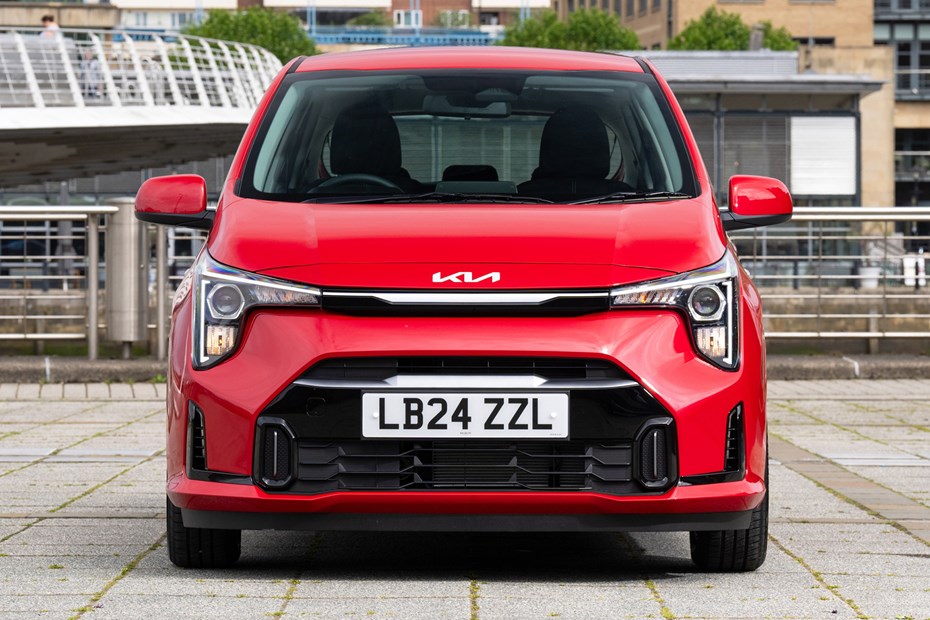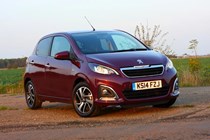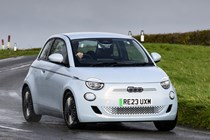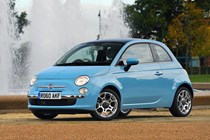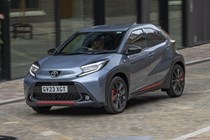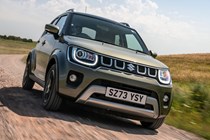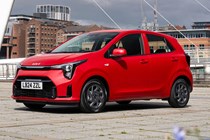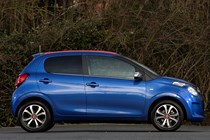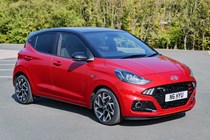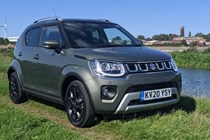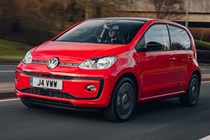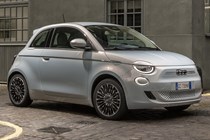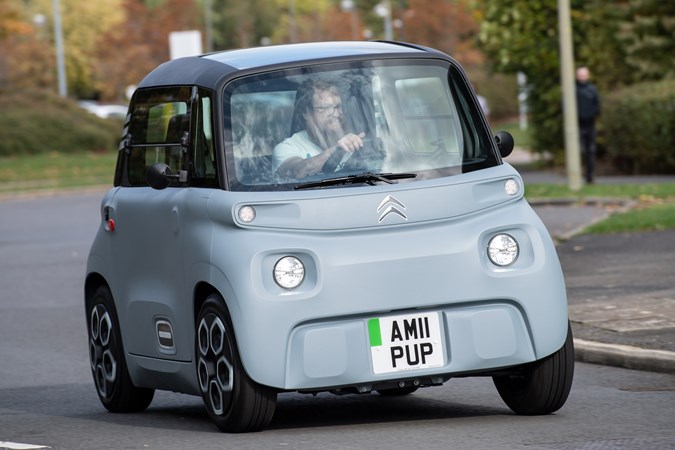Heavily built-up urban environments can make car ownership a bit of a pain, but you can alleviate some of the bother with a purpose-built city car. They’re very small – among the smallest cars you can buy – produce hardly a breath of CO2 and with just a piddly little 1.0-litre engine to keep you on the move, can be very economical, too. The perfect concrete jungle runabouts.
Small, cut-rate and with just enough power to get you going from a standstill – they must be rubbish cars? At one time, perhaps, but most contemporary city cars are resplendent in modern technology to squeeze as much power out of their engine units as possible. With the help of cutting-edge turbochargers, these cheap and featherlight cars can be surprisingly sharp off the mark, offering as much poke as you’ll ever need to potter around town with.
In the past, opting for a car this small also meant sacrificing cabin equipment and safety technology – but todays city cars can be specified with some impressive extras. For example, the Volkswagen Up can be equipped with a six-speaker Beats audio system and the Hyundai i10 features lane-keeping assist and autonomous emergency braking as standard.
There’s no getting around the size issue, mind. Tall drivers might find some of the cars in this to be a bit of a squeeze, and you wouldn’t want to use them for regularly carrying four passengers. The cost savings might just be worth the sacrifice, though. Browse our list below for some inspiration.
The best city cars for 2025
Sporty attitude with a tempting price and great warranty
The entry-level, naturally aspirated 1.0-litre three-cylinder petrol engine is a little underpowered, but the range-topping 1.2-litre power unit version fitted to the GT-Line S model is plenty spritely enough, easily keeping up with the give-and-take of modern motoring. Both come with a snappy manual gearbox as standard.
Read the full Kia Picanto review
Pros
- Well-equipped, well-made interior
- 1.0-litre turbo is excellent
- Easy to drive
Cons
- Basic engine needs working hard
- Optional automatic is awful
Grown-up choice with excellent reliability
You’re not exactly short-changed on the equipment front either. Even the most basic SE model comes with autonomous emergency braking, cruise control, lane-keeping assist and air conditioning. Make merry with the options list and you can have such luxuries as an 8.0-inch infotainment system, a wireless smartphone charger, a heated steering wheel and a rear-view parking camera. You can even have a sporty N-Line model with 100hp and a racy body kit.
Read the full Hyundai i10 review
Pros
- Exceptional interior space compared to rivals
- Classy, easy-to-use dashboard
- Lots of safety equipment
Cons
- Optional automatic gearbox is atrocious
- Higher trim levels are pricey
Still our favourite small electric car
Those figures are encouraging enough to coax you away from the city and onto the open road – as are the 500e’s punchy electric motors. The base-model has 93hp, while the range-topper has 118hp. More importantly though, both cars have 210Nm of torque which makes them spring away from the lights like a startled rabbit. You can have it as a convertible, too.
Read our full Fiat 500e review
Pros
- Wonderfully stylish inside and out
- Quick and fun to drive
- Long range for a small car
Cons
- Entry-level version trades range for cost
- Not particularly practical
Reassuringly reliable choice for two...
As a city car, though, the Aygo X works very well. Its taller suspension means it rides better than the old Aygo hatchback, which is handy when it spends all day dealing with potholes, speed bumps and stray footballs. It’s also packed with technology. The most expensive model comes with a 9.0-inch infotainment system, heated seats, a retractable canvas roof and a wireless smartphone charger.
Read the full Toyota Aygo X review
Pros
- Ride quality improved over Aygo
- Cabin stylish and functional
- Decent around town
Cons
- Puny engine struggles on the open road
- Terrible rear legroom
You won't mistake it for any other car
We also haven’t addressed the Ignis’s trump card. Unlike anything else in the city car class, you can take it off-road because it’s available with four-wheel drive. We’d say it’s an option box well worth ticking if you live somewhere rural. Its 83hp 1.2-litre four-cylinder mild-hybrid petrol engine also is entertaining on a B-road, although it starts to labour once you hit the motorway.
Read the full Suzuki Ignis review
Pros
- Unique hybrid and 4x4 offerings
- Cheap to buy and run
- Fun to drive in the city
Cons
- Safety kit lacking
- High insurance grouping
Taking city cars to the extreme
It’s powered by a tiny 5.5kWh battery pack that can store enough electricity for a maximum range of 43 miles. Power goes to a dinky 8hp electric motor mounted on the rear axle, which can push the Ami up to a top speed of 28mph – so you’ll never get a speeding ticket. Also, because the battery is so small, it’ll recharge fully in just three hours when connected to a three-pin socket.
Read the full Citroen Ami review
Pros
- Fun, funky urban transport
- Drier and safer than a moped
- Cheap to buy and lease
Cons
- It’s a quadricycle, not a car
- Very few frills or safety kit
Just so you know, we may receive a commission or other compensation from the links on this website - read why you should trust us.


